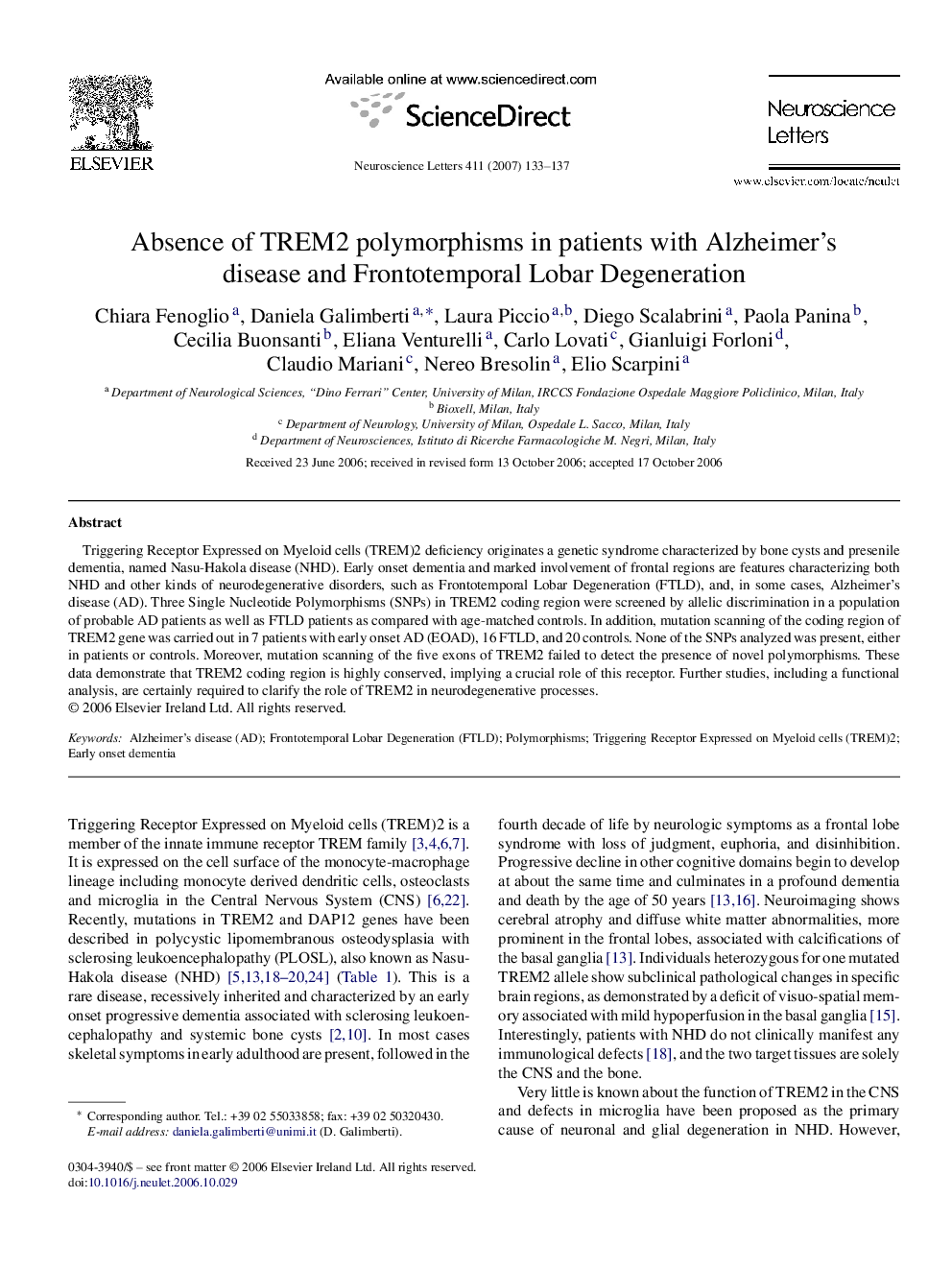| Article ID | Journal | Published Year | Pages | File Type |
|---|---|---|---|---|
| 4350019 | Neuroscience Letters | 2007 | 5 Pages |
Triggering Receptor Expressed on Myeloid cells (TREM)2 deficiency originates a genetic syndrome characterized by bone cysts and presenile dementia, named Nasu-Hakola disease (NHD). Early onset dementia and marked involvement of frontal regions are features characterizing both NHD and other kinds of neurodegenerative disorders, such as Frontotemporal Lobar Degeneration (FTLD), and, in some cases, Alzheimer's disease (AD). Three Single Nucleotide Polymorphisms (SNPs) in TREM2 coding region were screened by allelic discrimination in a population of probable AD patients as well as FTLD patients as compared with age-matched controls. In addition, mutation scanning of the coding region of TREM2 gene was carried out in 7 patients with early onset AD (EOAD), 16 FTLD, and 20 controls. None of the SNPs analyzed was present, either in patients or controls. Moreover, mutation scanning of the five exons of TREM2 failed to detect the presence of novel polymorphisms. These data demonstrate that TREM2 coding region is highly conserved, implying a crucial role of this receptor. Further studies, including a functional analysis, are certainly required to clarify the role of TREM2 in neurodegenerative processes.
